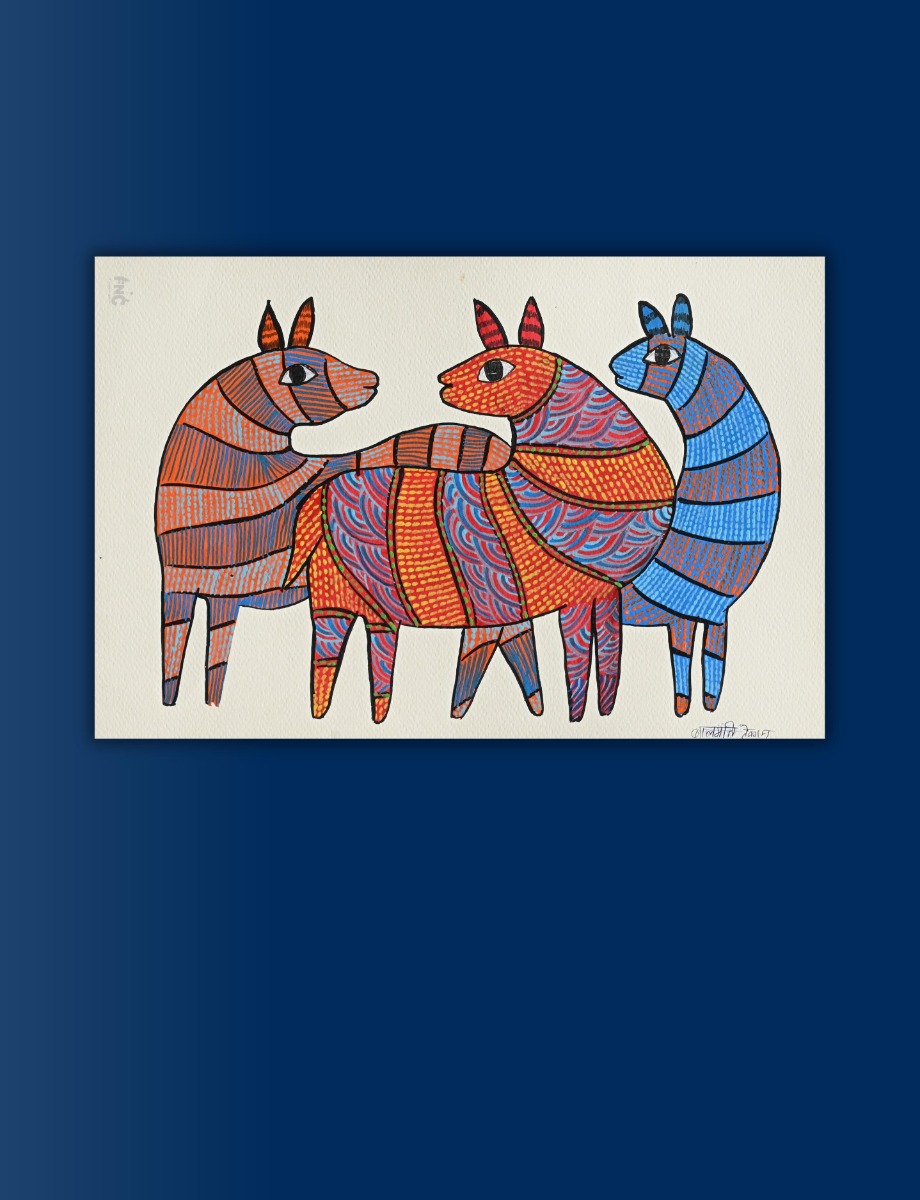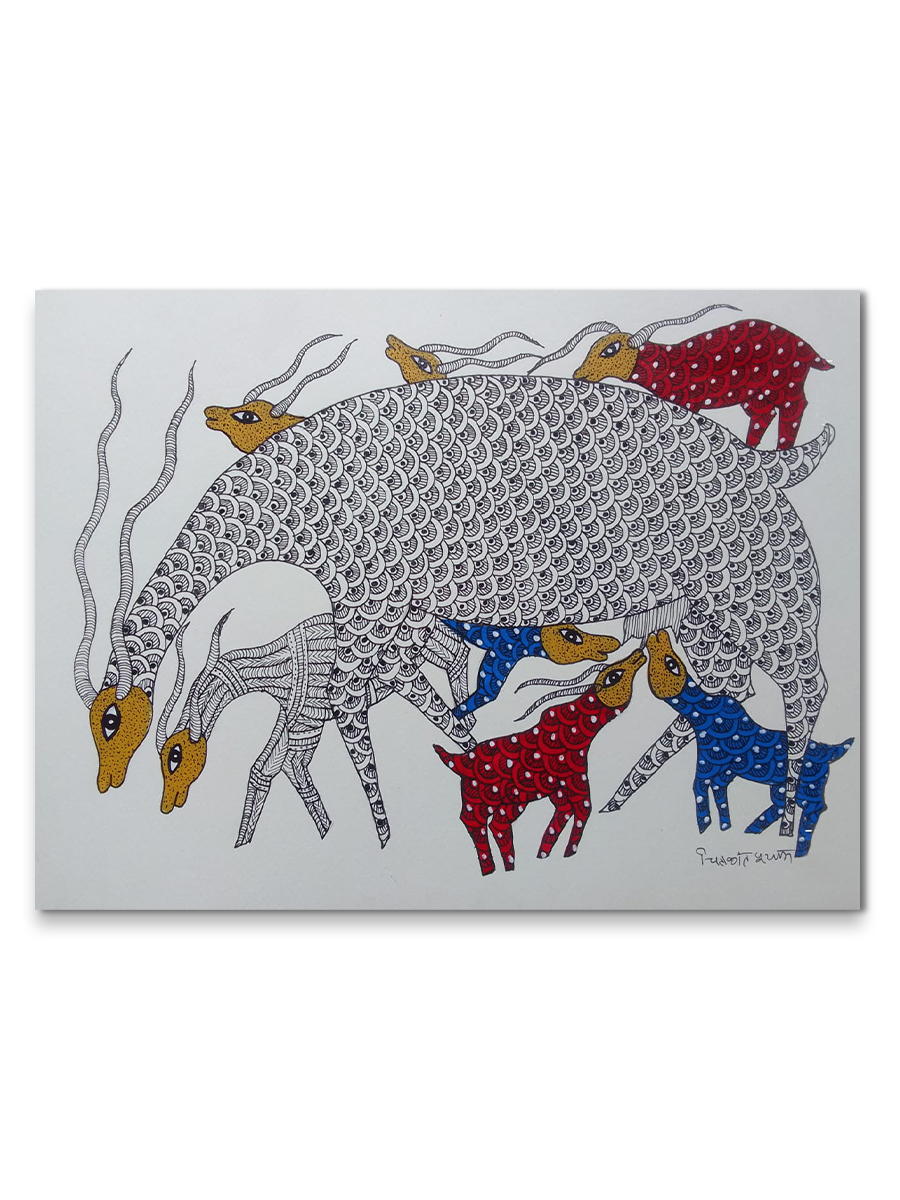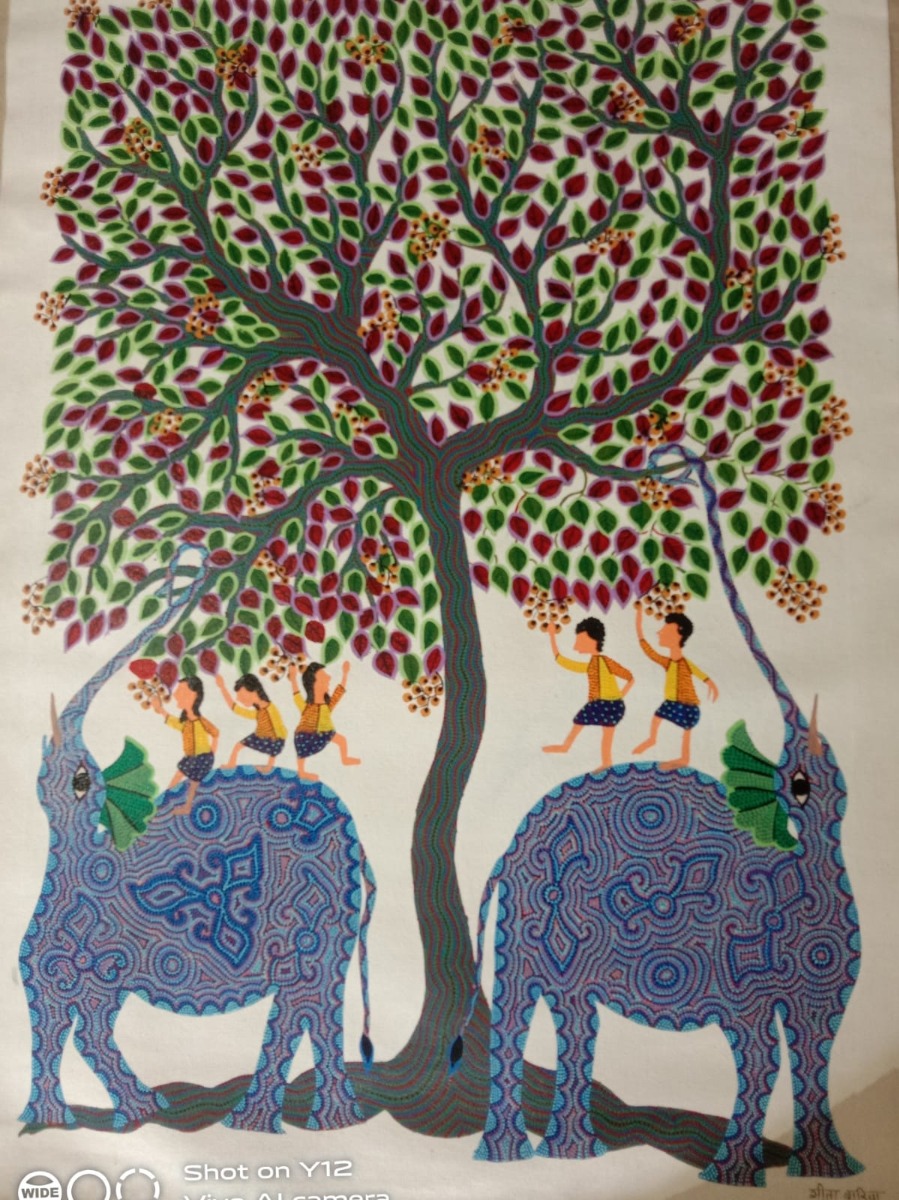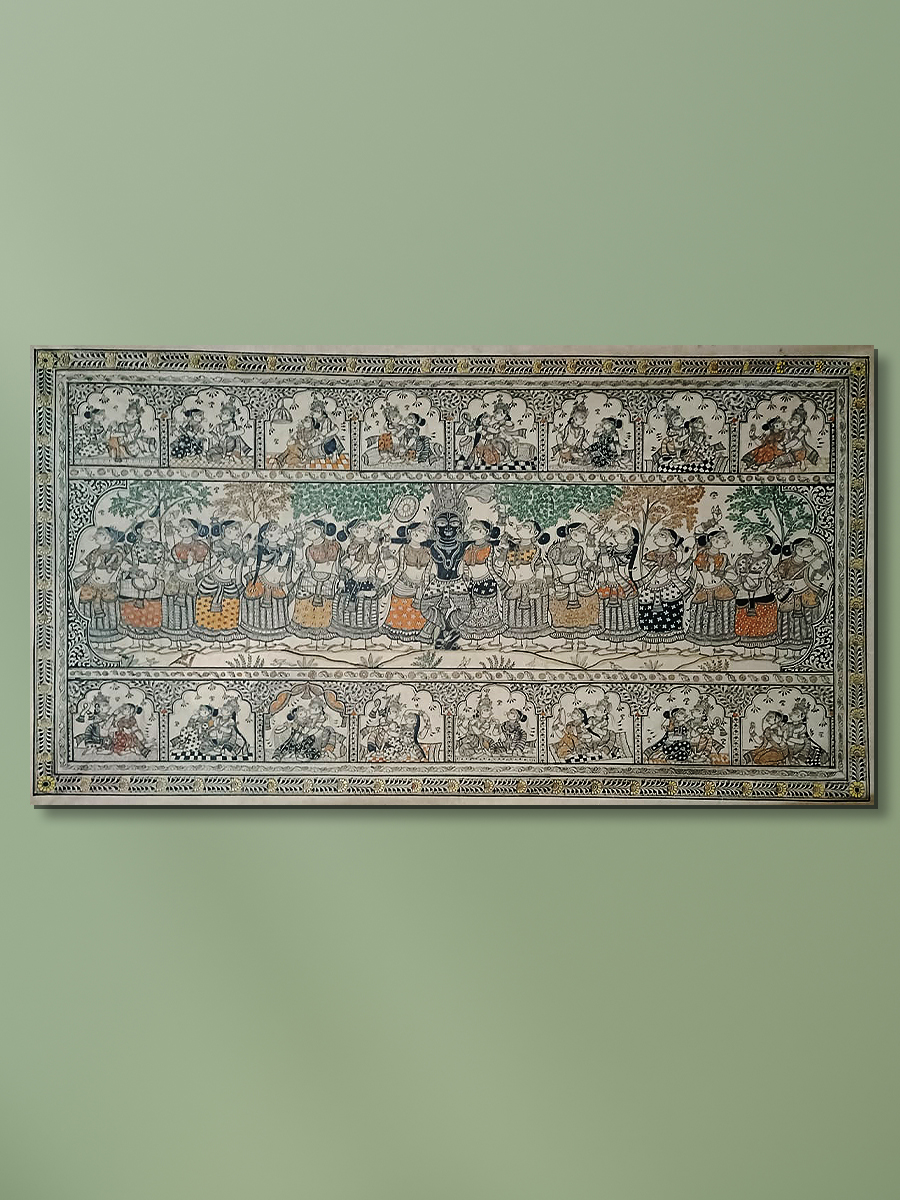The Importance of Preserving Traditional Tribal & Folk Paintings
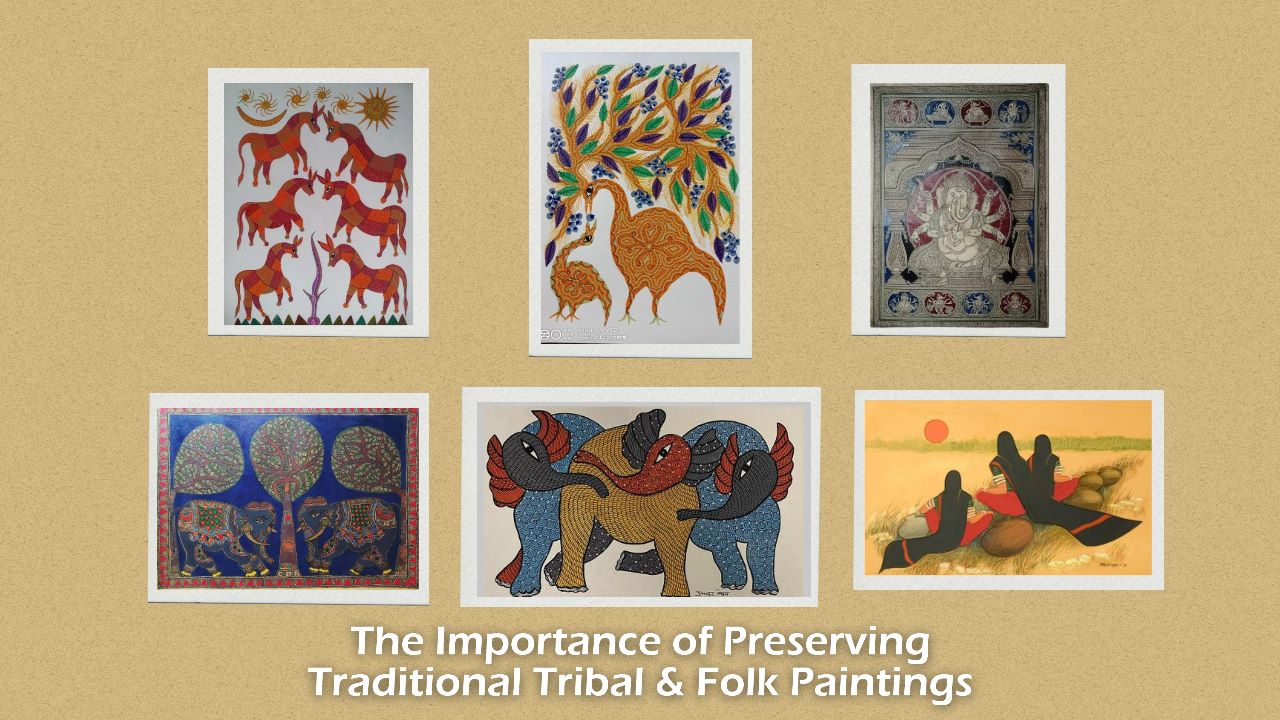
India is a country that boasts of a rich cultural heritage, with diverse artistic practices and traditions. Among the unique forms of art in India is the traditional tribal art paintings, created by various tribal communities across the country. They say that a picture speaks a thousand words. Well, a tribal art painting speaks a thousand other things as well because it not only showcases the creativity and artistic skills of these communities, but also their diverse religious beliefs, social practices, and cultural traditions.
Historical Significance of Tribal and Folk Paintings
Tribal and Folk paintings have been a part of India's cultural heritage for centuries. These paintings are unique, with each tribe having its own distinctive style, motifs, and themes. For instance, the Warli tribe in Maharashtra and Gujarat is known for its intricate paintings with geometric shapes that depict the daily life and customs of the tribe, while the Gond tribe in central India is known for its vibrant and intricate paintings that feature lines, patterns and designs inspired by nature and mythology. The Bhil paintings feature motifs of gods, goddesses, and animals along with shapes filled in with earthy, yet bright colours, which are overlaid with uniform colourful dots that strikingly stand out against the background. The Pithora style, on the other hand, is the wall painting style of the Rathwa, Bhil and Bhilala tribes characterized by the presence of horses.
Among the other art forms are myriad folk paintings dotting the country. Madhubani Art, also known as Mithila painting, is a traditional Indian art form that originated in the Mithila region of Bihar. It is characterized by the use of vibrant colors, geometric patterns, and natural motifs such as birds, animals, and flowers. Pattachitra from Odisha is known for its intricate details and the use of bright colors to depict mythological and religious stories. From the Kangra Valley in Himachal Pradesh, we have paintings known for their delicacy and detailed brushwork. Kangra paintings depict scenes from Hindu mythology, as well as portraits of Rajput and Mughal rulers. Similarly, we have Kerala mural paintings (from Kerala, of course) and Pichwai paintings from Rajasthan that often depict Shrinathji or Krishna in various forms and settings.
Handmade Tribal Gond painting of Colourful Deer
Kutchi Mud Paintings from the Kutch region of Gujarat are also known as "lippan kaam”. They are a stunning and unique form of tribal art that can be found in the Kutch region of Gujarat, India. These paintings are created using a mixture of mud and camel dung that is applied to the walls of homes and other buildings. The mud is then sculpted into intricate patterns and designs using a small stick or finger. The end result is a beautiful and durable work of art. Mud wall paintings often feature geometric patterns and floral designs that are inspired by the natural surroundings of the Kutch region. These paintings are not only a reflection of the artistic skill and creativity of the tribal communities, but also a testament to their deep connection to the earth and their commitment to preserving traditional techniques and knowledge.
Unique Aspects of Tribal Art Paintings
Originally, most tribal art paintings were created as wall paintings and were used to decorate the walls of homes belonging to tribal communities. These decorations were not just meant for aesthetics, but also had a deeper purpose. Tribal communities believed that these paintings had the power to appease their gods, ward off evil spirits, express gratitude to nature for its bounties, celebrate local customs, and rituals.
For example, the Warli tribe in Maharashtra creates wall paintings using white rice paste on a red ochre background. These paintings depict scenes from everyday life, but also include motifs such as animals, trees, and the sun, which are believed to have protective powers. Similarly, the Gond tribe in central India creates intricate paintings that often feature images of nature and animals, as well as deities and spirits that are believed to protect the community. The paintings are used in rituals and festivals to invoke the blessings of the gods and to ward off evil.
In the northeastern state of Assam, the Karbis tribe creates intricate wall paintings using natural pigments and rice paste. These paintings depict scenes from the tribe's myths and legends, as well as images of animals and nature. The Bhil tribe in Rajasthan creates vibrant wall paintings featuring images of the tribe's gods and goddesses, as well as scenes from their everyday lives. They are believed to have the power to bring good luck, prosperity, and happiness to the home and its inhabitants.
Handmade Tribal Gond painting of Deer Family
One of the most fascinating aspects of tribal art paintings is the use of natural materials and colors. Traditional tribal art paintings are typically created using natural materials such as clay, cow dung, and plant extracts, and the colors used are often derived from natural sources such as flowers, leaves, and soil. This gives the paintings a unique, earthy quality and makes them environmentally sustainable. For instance, Madhubani art, which is also referred to as Mithila art, is a customary form of art in Bihar and Nepal. It is distinguished for utilizing local plants to create colours, treating paper with cow dung, and using bamboo sticks as brushes to create its beautiful and simplistic paintings.
Over time, these tribal communities realized the commercial value of their art and started transposing it onto other surfaces. They began using canvas, paper, wood, and other materials to create their works of art. This transition led to an increase in the popularity and demand for tribal paintings and helped commercialize them to an extent.
Tribal art paintings also have spiritual and ritualistic significance. They are often created as a part of religious ceremonies and festivals and are believed to have protective and healing properties. They are used to ward off evil spirits and negative energies, and are an integral part of the religious practices and beliefs of the tribal communities.
Threats Faced by Traditional Tribal Art Paintings
Despite their cultural and artistic significance, traditional tribal art paintings face several threats. One of the biggest threats is cultural appropriation, with many non-tribal artists and designers copying the motifs and designs of authentic, handmade tribal and folk paintings without giving due credit to the communities that created them. This poses a serious threat to the authenticity of tribal paintings, as it dilutes the cultural significance of these art forms and takes away from the economic empowerment of the actual tribal artists.
Another major threat is the proliferation of digital prints of tribal paintings. While digital technology has made it easier to reproduce artwork, it has also led to a rise in fake or inauthentic reproductions. Unlike traditional handmade paintings, digital prints require no effort or artistic skill to produce, and hence they are often sold at lower prices than the original paintings. Moreover, the proliferation of digital prints and the decline of authentic handmade tribal paintings threatens to erode the rich cultural heritage and unique identity of these art forms. This not only undermines the cultural significance of the paintings but also takes away economic opportunities from the tribal communities.
Handmade Tribal Bhil painting of village children playing in complete harmony with nature
It is essential to recognize the value and significance of traditional tribal paintings and support the authentic artists who create them.
Tribal art painting artists often come from economically marginalised communities and have limited access to markets and opportunities to sell their artwork. They are also generally not very tech savvy, and this often leads to them struggling to make ends meet.
Another threat is displacement, with many tribal communities being forced to relocate due to development projects, environmental degradation, and other factors. This leads to a loss of traditional knowledge and cultural practices, including traditional painting techniques and motifs, and essentially a part of our heritage
Preserving Traditional Tribal Art Paintings
Preserving traditional tribal art paintings is essential for the preservation of our cultural heritage, as well as for the economic empowerment and cultural revitalization of the tribal communities. It is important to create awareness about the cultural and artistic significance of these paintings, and to ensure that they are recognized and valued.
Providing economic opportunities to the tribal communities not only supports the livelihoods of the communities but also encourages the continuation of their age-old traditions. Another solution is to promote these art forms globally. By leveraging global e-commerce platforms, tribal paintings can be showcased to a wider audience, and art lovers can learn about the cultural significance and value of these traditional art forms. This can also create a market for authentic tribal paintings, increasing demand and incentivizing artists to continue producing these works of art. Ultimately, by promoting and preserving traditional tribal paintings, we can help ensure that these beautiful and culturally significant art forms continue to thrive for generations to come.
Traditional handmade Pattachitra painting of Radha-Krishna and Raas Leela
Apart from being a window into the tribal communities' rich history and cultural practices, these paintings are exquisite and lift up the ambience of your homes and workspaces. Gifting is an excellent way to spread awareness and support tribal paintings. Not only does it provide an opportunity to appreciate and own a unique piece of art, but it also helps to preserve traditional knowledge and practices. For instance, gifting these paintings from sites like Planet Handcrafted that stock authentic, hand painted and ethically sourced products to friends and family, you can introduce them to the beauty and cultural significance of tribal art. These paintings are not just decorative items, but they also serve as a representation of the rich heritage and traditions of the tribal communities. Moreover, they add a touch of ethnicity to your living or workspace, enhancing the overall aesthetic appeal.
Feel free to browse through authentic, handmade collections online and enrich your inner spaces with pieces of our common human heritage!
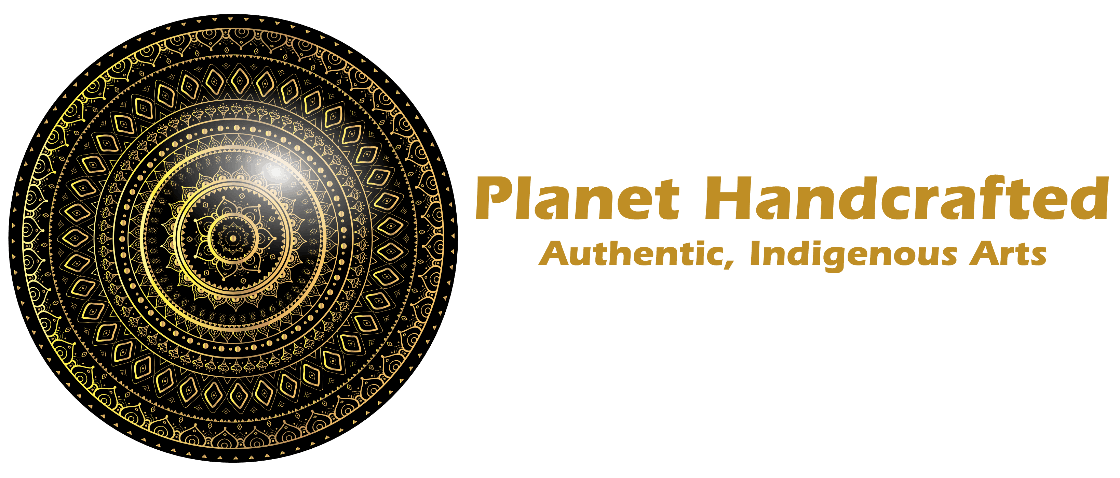

 USD
USD  GBP
GBP EUR
EUR AED
AED



